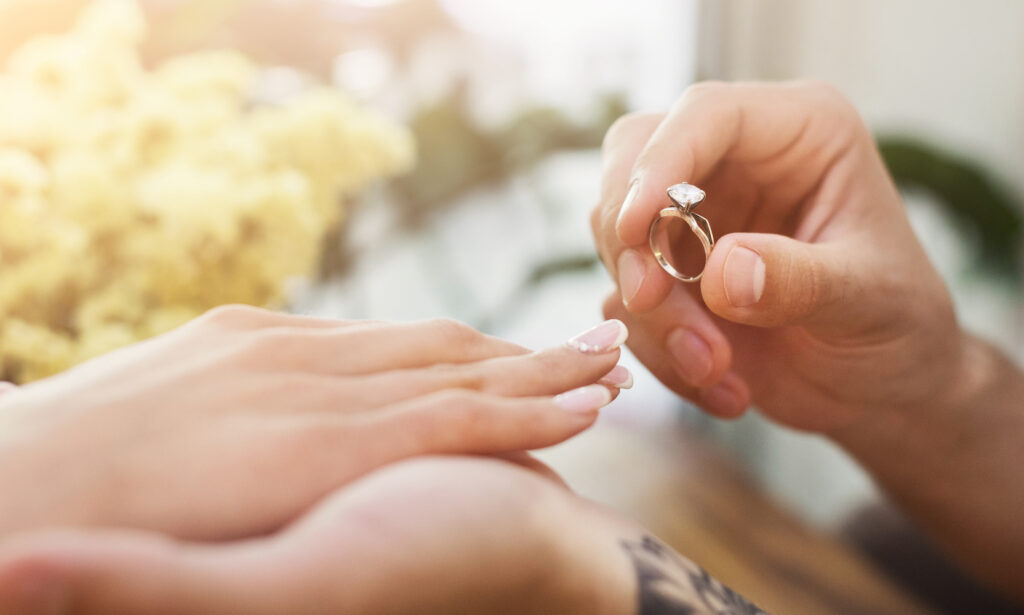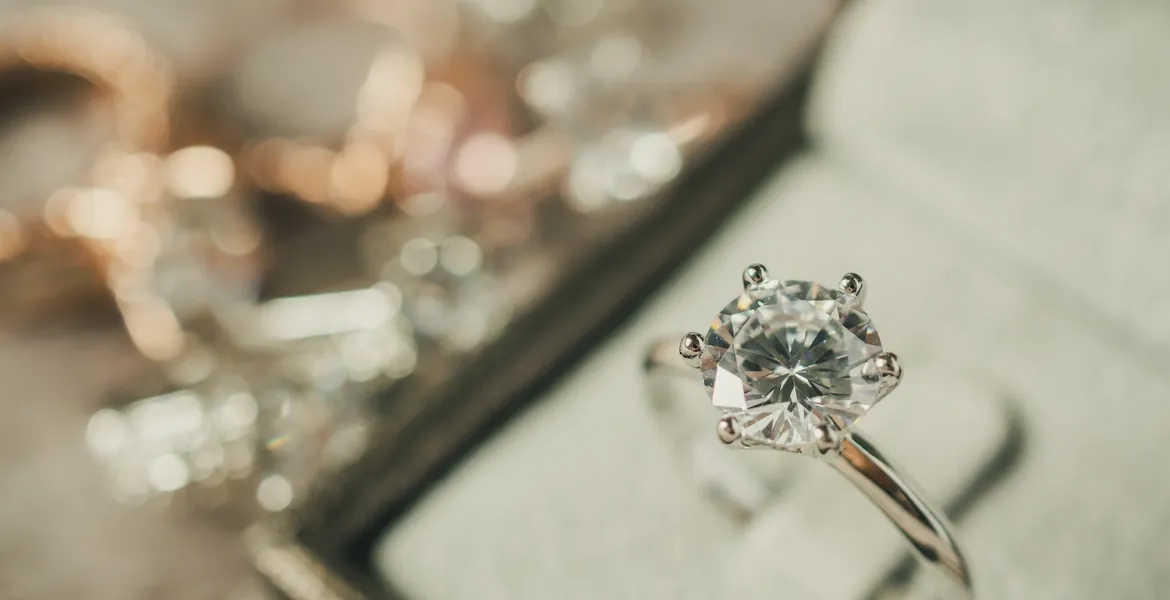Are you planning a marriage proposal for your long-term partner? Shopping for an engagement ring is one of the most exciting parts of this adventure. However, it can also be quite arduous, especially if it’s your first time shopping.
At the jewelry store or online shop, you’ll find seemingly endless options, which makes it even more challenging for you. To make the right decision, you need to consider a few factors before shopping. Among the main things to keep in mind include the type of material: gold, diamond, platinum, silver, tungsten, or titanium.
Another important factor to consider is your budget. Deciding how much to spend on an engagement ring can help you satisfy your needs without going deep into debt. Although what you spend is ultimately a personal decision, having a smart guideline in mind helps remove some stress from the process.
Not sure how to go about setting the right budget for your engagement ring? This article will walk you through everything you need to know.
- What Is The Average Cost Of An Engagement Ring?
The cost of an engagement ring varies based on several factors, including style and material. Business Insider says the average American spends about USD$7,750 on this special feature. However, various factors influence the pricing of an engagement ring. This is why the cost can go below USD$1,000 and over USD$10,000.
- How Much Should You Spend?
There is no set price when it comes to buying an engagement ring. Nevertheless, you need to decide on an approximate figure to avoid overspending, especially since your wedding will also be around the corner. Here are some tips to help you determine how much you should spend.
- Rethink The Traditional Formula
There is a long-standing rule of spending two to three months of your salary on an engagement ring. This guideline took hold when De Beers diamond company launched an influential advertising campaign in the 1940s stating men should spend that much. The savvy marketing etched that metric into popular culture and public perception of how much to invest in a ring.
However, this formula is outdated and often unrealistic in today’s economic climate. Spending 200–300% of your monthly earnings is a huge price tag that can put couples into debt right out of the gate. Very few can comfortably set aside multiple paychecks for a jewelry purchase.
Though industry players still tout this rule to sell more expensive rings, following it strictly is not financially advisable for most. Rather, modern experts argue that spending 1–3% of your gross annual income on an engagement ring is a smarter budget baseline. This allows focusing more on overall wedding budget priorities and the ring style that fits your partner best within reasonable means.
- Consider Your Budget
Set a realistic budget you can afford as the starting point for engagement ring shopping. Before getting swept up googling rings with five-figure price tags, take a step back and have an honest conversation about cost expectations with yourself and your partner.
One mistake many couples make is basing their decision on what others are spending or arbitrary rules of allocation. To be on the safer side, your current financial standing should drive the budget range.
Consider your income level and stability, existing debts and expenses, savings levels and timeline, wedding budget, sources of funding, and competing financial priorities like a home down payment.
Basing the budget on what you can afford prevents sticker shock, hidden costs, and buyer’s regret down the line. For example, if you’re a graduate student making USD$25,000 annually, allocating 1% would cap your spending at USD$250. Or if you bring in USD$75,000 combined with your partner but have student loans, maybe aim for USD$1,500 as the upper end, less than 2% salary.
- Factor In Her Preferences
When deciding how much to spend on an engagement ring, you should consider what style and elements your future fiancée would want. Rather than assuming you know her taste or what’s expected, have an open conversation about both of your preferences.
This dialogue can give you valuable insight into priorities to guide your shopping and budget setting. Here are key points to explore:
- Ring Style: Does she like a classic solitaire, halo, three stone, colored gem, or unique band shape?
- Metal Type And Color: Does she prefer white gold, platinum, yellow gold, or rose gold? Choose from the wide range of creative ring designs and find one that suits her preference.
- Diamond Shape: Round is most common, but get input on cushion, oval, pear, or princess cuts.
- Diamond Quality: Should you focus your budget on size or high color/clarity grade? Get input on her minimum expectations.
- Ring Size And Wearability: Determine her finger size and if she wants something dainty or with presence.
- Design Inspiration: Have her create a Pinterest board with ring styles she loves. See what patterns emerge.
- Lifestyle Factors: Make sure the ring suits her career, hobbies, and aesthetics.
If she dreams of a two-carat oval diamond in rose gold, you’ll allocate the budget much differently than if she wants an eco-friendly sapphire in a nature-inspired vine setting. Involving your future fiancée in this decision-making process can help you shop more wisely. Compromise if you need to stay within budget for the size/quality she envisions. Above all, make sure the ring reflects what she’ll cherish.

Conclusion
While the amount you should spend is dependent on your unique situation, following these tips will help you find the sweet spot. An engagement ring is one of life’s big purchases, but it doesn’t need to break the bank. Focus on finding one within your current budget that fits her style. This will let you pop the question with a ring she’ll absolutely treasure.

